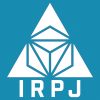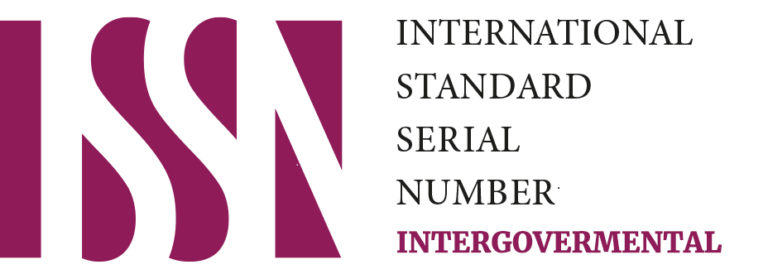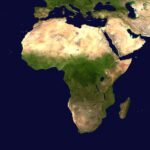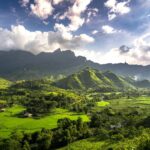Abstract
The problematic of using clean cooking fuel is a new concept in Rwanda, where more than the majority of the population lives in a rural area and use wood for all heating needs. With the government engaging in improving the health and protection of the environment, it becomes mandatory to look for alternative fuels not harmful or way to improve the methodology and the quality of stoves used in the country. One of the alternatives that have started but still needs various supports for a correct implementation is the use of Liquefied Petroleum Gas (LPG). For the success of the transition from the use of charcoal to the LPG, both international organizations and the Government of Rwanda will provide substantial support.
1. Introduction
For centuries, the Rwandan population used firewood for cooking. They had enough natural forest, and in the nearest past, the equilibrium created by the newly planted forest granted enough resources to the community for their need for cooking. The problem started with rapid deforestation. The total area forested in Rwanda was 30% of total land area in the 1930s, reduced to 25.7% in 1960, and finally to 8.9% in 2000.[1]
However, despite the effort to plant more trees, the country could not rely longer on his forest to produce enough firewood and charcoal. In-kind of situation, the country faces the imperative to look for alternative sources of energy that will not depend on the existing and newly planted trees.
2. The transition from cooking with charcoal to LPG gas (2018-2024)
2.1. Background
The period between the 1960s and 2010s the country recorded a decrease of forest clearance from 634,000Ha to 221,200Ha but the high increase of the population density from 129 habitants per sq. Km in 1960 to 417 habitants per sq. Km in 2010, let us anticipate that the use of woods for cooking will continue to increase. The only way to prevent forest clearance is to adopt new cooking methodologies and new cooking fuels.
Table 1: Population density vs. Forest clearance: [2]
| Year | 1,960 | 1,970 | 1,980 | 1,990 | 2,000 | 2,010 |
| Population density | 129 | 182 | 195 | 258 | 277 | 417 |
| Forest clearance (x1000Ha) | 634 | 592 | 514 | 451 | 384 | 221 |
Figure 1: Population density vs. Forest clearance
Electricity is one of the replacement, but it is too expensive comparative to the income of the population. Indeed, Rwanda practice tariff band for electricity power where for people consuming below 15KWh per month (less than 0.5KWh per day), the price is 0.11$ per KWh; between 15 and 30KWh per month (0.5 – 1KWh per day), the price is 0.23$ per KWh. Those two categories will not have the capacity to afford the electricity cost for cooking. The next bands of consumers between 50KWh and 100KWh per month will pay between 0.27$ and 0.28$ per KWh, [3] which is the highest electricity tariff in the East African Community.
Despite the excellent economic performance of Rwanda in the last few years with 761US$ GDP per capita in 2018,[4]the population still living with a meager income that cannot afford the cost of electricity for cooking with the actual electricity tariff.
The most affordable alternative cooking fuel is biogas developed from agriculture waste, biofuels, and petrol products and in particular, the liquefied petrol gas, commercially known as LPG.
2.2. Insufficiency of wood and charcoal
Rwanda has progressively replaced its source of energy, especially for cooking from the firewood to the charcoal between 1970 and 1980. Then, under pressure created by the formalization of the country environment policy to the international standards, the Government increased planting more trees on one side and replacing the use of firewood and charcoal by other biomass products on another side.
Rwanda is part of the countries having the highest population densities in Africa with 471 persons/sq.km.[5] For this reason, the population cultivates most of the arable land and plants some trees on the remaining areas. For decades, the country brought particular attention to the improvement of the cooking stoves to reduce the quantities of wood or charcoal consumed and started to look for alternative sources of energy that would replace the existing materials.
According to AGRICONSULTING S.p.A., the supply/demand balance in 2009 shows a national deficit of 870 thousand tons. This statement means that approximately 21% of the total woody biomass consumed is non-sustainable and is satisfied by marginal sources of biomass not included in the supply potential. This deficit is not trivial but is much smaller than previously estimated.[6] The challenge is that important as the Ministry in charge of energy estimated the demand at 85% in 2015.[7]
2.3. Cooking energy consumption pattern in Rwanda
According to the Fifth Integrated Household Living Conditions Survey published in 2018, 65% of households located in urban areas use charcoal as cooking fuel, 26% use firewood, and 5% use gas. The data are different in rural areas where 93% of households use wood, 6% of charcoal, and 0.2% of gas.[8]
Despite the methane gas, Rwanda does not produce cooking gas, especially liquefied petrol gas. In 2018, only eleven importers were supplying the country with cooking gas. The importers transport all LPG by road tankers of 10-20 metric tons through either Kenya or Tanzania.
The retail shops vary from petrol service stations, supermarkets, and independent distributors, who sell the gas in different sizes ranging from 8kg to 50kg. The sellers transport the gas between cities with tanks of 100kg to 5 tons.
From 2012 to 2017, the usage of LPG has doubled. The consumption of liquefied gas for cooking remains low compared to other fuels, but we observe a significant increase in the use in urban and peri-urban areas. The government of Rwanda, thought the Rwanda Utilities Regulation Agency (it’s regulatory agency), adopted administrative regulations on LPG in 2012 and started granting LPG business and installation licenses, and has updated them in 2017 by removing some gaps and resolving some of the problems relating to their technical, legal, and economic aspects.[9]
The country has started the production of methane gas in Kivu Lake, but it still used principally for the production of electricity. For about two decades, the methane gas was serving to heat the boiler of the local brewery (BRALIRWA). Since 2015, electric power generation plants use methane gas to produce about 66 megawatts directly injected into the power grid[10]. However, we can imagine a small share of domestic use. The problem is that LPG has a higher energy content at 93.2MJ/m3 vs. natural gas at 38.7MJ/m3, and that makes a choice advantage the LPG to the methane gas.[11]
2.4. Environmental issues
Beyond the availability of firewood and charcoal, the most significant impact of wood and charcoal cooking is the effects on people’s health and the environment in general. Each year in Rwanda, there are 5,680 deaths a year related to household air pollutants, 94% of whom are children.[12]
In Rwanda, actions to protect and conserve the environment started in the colonial period. Reforestation began in the 1920s, and in 1947 tree planting, radical terraces, bench dishes, and anti-erosion hedges became colonial policy. After independence in 1962, environmental protection declined for a time; it resumed in 1977, and the country adopted a national environment strategy in 1991.[13]
In his environment policy, under Vision 2020 objectives, Rwanda committed decreasing within the national energetic assessment rates of diseases related to environmental degradation and firewood from 60% and 94% to 50%, respectively.[14]
One of the approaches adopted by a Rwandan private company called Inyenyeri is to produce and sell a scalable, clean, and environmentally-sustainable cook stove.[15] Several other companies engaged in a race for the protection of the environment through the search for alternative solutions to firewood and charcoal. Improving the cookstoves models using a clean alternative fuel contributes to a healthy, social, and environmental solution and contributes to economic growth and poverty reduction.[16]
Rwanda has tested different biofuels, including ethanol, clean and environment-friendly, when used with the proper stove. In a comparative study of six types of improved stoves conducted by Jean de Dieu IYAKAREMYE, it appears that we can save up to 75% of firewood consumed annually by substituting them to the ordinary models.[17]
Despite the good results obtained with the biogas produced from agricultural wastes, the development of the process has been quite slow because of the initial investment cost required to start the production.[18] However, the Government of Rwanda grants 50% of subsidies to ensure that the initiative remains operational, and according to the multi-tier framework attributes for access to modern energy cooking solutions published by the World Bank Group, 72% of households are willing to pay full price for an improved biomass stove upfront or in six monthly installments.[19]
2.5. Rwanda’s effort to access modern energy cooking solution
A report published by the World Bank Group in 2018 entitled “Rwanda Beyond connections energy access diagnostic report based on the multi-tier framework” defines the measurement of access to energy by Tiers from zero to five, ranging from Tier 0 (no access) to Tier 5 (full access) along a continuum of improvement.[20]
According to this report, the majority of the population (73%) have no access to clean energy, like electricity, and only 3.7% of the population have full access to electrical power, as presented in the following diagram.
Figure 2: Access to clean energy of households in Rwanda:[21]
Rwanda faces a double challenge in improving access to modern energy cooking solutions: a high percentage of households that still use highly polluting three-stone and traditional stoves and a meager rate of homes that use clean fuels. The ultimate objective is to provide all families access to cooking solutions that are clean, efficient, convenient, affordable, safe, and available (Tiers 4 and 5), but in the interim improved biomass stoves could be an immediate solution to move households in Tier 0 to Tiers 1–3.[22]
The exposure to polluting cooking energy is different between rural and urban areas. We observe a slow but increasing use of clean energy in the metropolitan area where we record 2% of the usage of LPG cooking gas and 63.9% of households using an improved stove, while in a rural area only 22.4% households use an improved oven, and use of clean fuel stoves is negligible.[23]
The transition from Tier 0 to Tier 5 will take time and will pass by intermediate cooking fuels and improved stoves on Tier 3 and 4 before reaching Tier 5, as presented in the following table.
Table 2: Stove emission tier:[24]
| Type of fuel | Description of level | Tier |
| Firewood, dung, twigs, and leaves | Three-stone, tripod, flat mud ring | 0 |
| Conventional improved cookstove | 1 | |
| Improved cookstove with chimney, rocket stove with conventional material for insulation | 2 | |
| Rocket stove with high insulation, rocket stove with chimney (not well sealed) | 3 | |
| Rocket stove with chimney (well sealed), rocket stove gasifier, batch feed gasifier | 4 | |
| Charcoal | Traditional charcoal stoves | 0 |
| Old generation improved cookstoves | 1 | |
| Conventional improved cookstoves | 2 | |
| Advanced insulation charcoal stoves | 3 | |
| Advanced secondary charcoal stoves | 4 | |
| Rice husks, pellets, and briquettes | Natural draft gasifier (only pellets and briquettes) | 3 |
| Forced air | 4 | |
| LPG and biogas; electricity | 5 |
2.6. Forecast transition to LPG cooking gas
In his report, the Global Alliance for Clean Cookstoves divides the market for improved cooking stoves into four segments, reflecting different incomes and abilities to support the cost.[25]
Table 3: Cooking stoves market segment
| # | Market segment | N° of households | Current cooking device | Willingness to pay for improved cooking stove |
| 1 | Charcoal | 316 000 (13%) | Charcoal stove | Have the ability to pay |
| 2 | Wood | 711 000 (29%) | wood stoves | Can probably afford to pay |
| 3 | Biomass collectors (priority areas) | 305 000 (12%) | Three stone fire stove
|
No change expected because of the lack of disposable income. However, a limited number could pay. |
| 4 | Biomass collectors (others areas) | 1 100 000 (44%) | Three stone fire stove | Low, little to no disposable income |
In 2013, the Rwanda Natural Resources Authority (RNRA) had ordered a forecast study on demand for cooking fuel for 2020 that was conducted by AGRICONSULTING S.p.A. projecting the situation to 2020.
In one scenario, when considering doing business, depicting the probable situation in 2020 if nothing special is done to change the current status. This scenario assumes stable per capita consumption values and typical trends in the penetration of alternative fuels, such as LPG, as an effect of economic growth. In the second scenario, the demand for woody biomass for energy and construction in 2020, the need in Kigali City Province shall cover 27 % of the national consumption, when both studies were projecting the use of LPG in Kigali from 7.6% in 2009 to 15-30% of the total demand.[26]
According to the Ministry of Infrastructure, the use of LPG has increased tremendously since 2016 years to reach about 10,000 tons of LPG per annum, and this is expected to increase to more than 240,000 tons by 2024.[27]
The fact is that all the alternatives to the LPG present major inconvenient linked to the environment or harmful to people’s health like firewood and charcoal, and are discouraged by the government for this reason. A certain number of cooking fuels are, however, less harmful and are tolerated, like biogas, methane gas, and electricity.
To reduce the risks linked with firewood and charcoal in cooking, the government of Rwanda took measures and committed on target to reduce from 83% of the population using wood for cooking to 42% by 2024, as represented in the table below.[28]
Table 4: Forecast firewood reduction
| 2018/19 | 2019/20 | 2020/21 | 2021/22 | 2022/23 | 2023/24 | |
| Household using firewood | 83% | 75% | 67% | 58% | 50% | 42% |
The country encouraged the use of biogas for years, principally in public places like hospitals, schools, military barracks, and prisons, from latrines waste and agriculture wastes. For a limited number, some private institutions like motels have constructed a biogas system and keep them operational — however, the upfront cost for the construction of a biogas system still expensive for general use.
The consumption of charcoal for cooking can cost up to 36,000 francs per month for a family in Rwanda when one bottle of 24kg costing 28,000 francs would be sufficient for the same family and the same period and be less harmful. However, most of the families do not realize that charcoal is more expensive as they buy it in small quantities daily.[29]
The Government of Rwanda encourages the use of clean cooking fuel and in particular, the use of LPG, and for this reason, he keeps up sensitization campaigns and also puts up more incentives to enable gas suppliers to do their job. The essential motivation implemented was to avail public gas storage facilities for LPG suppliers across the country, setting up LPG strategic stocks to use in case of severe shortage, and waiving taxes on gas accessories.[30]
3. Conclusion
The transition from cooking on the charcoal to LPG still at the beginning with some difficulties, like the cost and cultural habits, but the trend shows that more people, especially in urban areas, are attracted by LPG and are willing to change.
With the encouragement and commitment of the government to support the transition by incentives and continuous sensitization, the population becomes aware of the ecological risk of cooking with wood and charcoal and understands the need to adopt clean fuels for cooking. The projection of the Ministry of Infrastructure forecasts the consumption of more than 240,000 tons of LPG by 2024, representing 4.2% of the full demand.
In line with the internal policy of the World Bank Group to increase access to clean energy and especially the use of LPG in cooking in developing countries, Rwanda committed to reaching 25% LPG penetration in urban areas by 2030.[31]
Furthermore, in May 2018, the Government of Rwanda and the Global LPG Partnership (GLPGP), a United Nations-backed public-private partnership, signed an agreement to bridge collaboration on national LPG scale-ups to reach the target of expanding to 40% of its population the availability of LPG by 2024.[32]
Conflict of Interest
I, Ladislas HAVUGIMANA, declare that no conflict of interest has guided or has influenced the research conducted for this article.
Acknowledgment
I acknowledge the contribution of Euclid University through different energy courses, and I thank especially the Pr Laurent Cleenewerck for his guidance for the research toward the completion of this article.
References
Eric Hahn. “Difference Between LPG and Natural Gas – LPG vs. Natural Gas – Is Propane Natural Gas | Butane | Methane | LNG | CNG,” October 19, 2019. https://www.elgas.com.au/blog/486-comparison-lpg-natural-gas-propane-butane-methane-lng-cng.
Eugène Kwibuka. “Gas Imports Upsurge as Domestic Demand Rises | The New Times | Rwanda,” March 6, 2018. https://www.newtimes.co.rw/section/read/229242.
Habiyaremye, Gabriel, Ge Jiwen, Jean De La Paix Mupenzi, and Waheed O. Balogun. Demographic Pressure Impacts on Forests in Rwanda, 2011.
Iyakaremye, Jean De Dieu, Leonce Harerimana, Deepak Das, Francois Mugwaneza, and Jean Bosco Ndikubwimana. “Evaluation and Comparison of the Performance Characteristics of Improved Firewood Stove for Rural Households of Rwanda,” 2019.
Mazimpaka, Ernest. “Woodfuel in Rwanda: Impact on Energy, Poverty, Environment and Policy Instruments Analysis,” 2014.
MINISTRY OF INFRASTRUCTURE. “Rwanda Energy_Policy.Pdf,” 2015. http://www.mininfra.gov.rw/fileadmin/user_upload/new_tender/Energy_Policy.pdf.
———. “Sustainable Energy for All: Rapid Assessment and Gap Analysis,” November 2014. https://www.seforall.org/sites/default/files/Rwanda_RAGA_EN_Released.pdf.
National Institute of Statistics Rwanda. “Integrated Household Living Conditions Survey 5 (EICV 5).” Accessed November 3, 2019. http://www.statistics.gov.rw/datasource/integrated-household-living-conditions-survey-5-eicv-5.
- Drigo, et al. “FINAL REPORT ‘BASIS FOR THE RWANDA SUPPLY MASTER PLAN FOR FUELWOOD AND CHARCOAL.’” AGRICONSULTING S.p.A., July 2013.
Rwanda Electricity Group. “Methane Gas in Rwanda.” Accessed November 13, 2019. http://www.reg.rw/what-we-do/generation/methane-gas/.
Rwanda Energy Group (REG). “Electricity Tariffs in Rwanda.” Accessed November 13, 2019. http://www.reg.rw/customer-service/tariffs/.
The Republic of Rwanda, Ministry of infrastructure. “ENERGY SECTOR STRATEGIC PLAN 2018/19 – 2023/24,” September 2018. http://www.mininfra.gov.rw/fileadmin/user_upload/infos/Final_ESSP.pdf.
THE WORLD BANK. “Beyond Charcoal: How One Company Helps Rwandan Families Save Their Health and the Environment, One Cookstove at a Time.” Text/HTML. World Bank, January 2019. https://www.worldbank.org/en/news/feature/2018/12/19/beyond-charcoal-how-one-company-helps-rwandan-families-save-their-health-and-the-environment-one-cookstove-at-a-time.
UNECA, ed. The Demographic Profile of African Countries. Addis Ababa, Ethiopia: Economic Commission for Africa, 2016.
UNIDO. “Baseline-Report-Pdf-Compressed-4.Pdf.” Accessed November 1, 2019. https://projectgaia.com/wp-content/uploads/2015/12/Baseline-report-pdf-compressed-4.pdf.
WLPGA. “Cooking-with-Gas-Why-Women-in-Developing-Countries-Want-LPG-and-How-They-Can-Get-It.Pdf,” January 2019. https://www.wlpga.org/wp-content/uploads/2019/07/Cooking-with-Gas-Why-Women-in-Developing-Countries-Want-LPG-and-How-They-can-Get-It.pdf.
World Bank Group. “Increasing the Use of Liquefied Petroleum Gas in Cooking in Development Countries,” 2017. https://openknowledge.worldbank.org/bitstream/handle/10986/26569/114846-BRI-PUBLIC-add-series-VC-LWLJfinOKR.pdf?sequence=5.
———. “Mpo-Rwa.Pdf,” October 2019. http://pubdocs.worldbank.org/en/366631492188168425/mpo-rwa.pdf.
———. “Rwanda Beyond Connections Energy Access Diagnostic Report Based on the Multi-Tier Framework.Pdf,” June 2018. http://documents.worldbank.org/curated/en/406341533065364544/pdf/Rwanda-Beyond-connections-energy-access-diagnostic-report-based-on-the-multi-tier-framework.pdf.
Yee, Amy. “Rwanda Eyes Biogas to Help Curb Deforestation.” The New York Times, September 21, 2018, sec. Climate. https://www.nytimes.com/2018/09/21/climate/biogas-curb-deforestation-rwanda.html.
[1] Gabriel Habiyaremye et al., Demographic Pressure Impacts on Forests in Rwanda, 2011, 4535.
[3] Rwanda Energy Group (REG), “Electricity Tariffs in Rwanda,” 1, accessed November 13, 2019, http://www.reg.rw/customer-service/tariffs/.
[4] World Bank Group, “Mpo-Rwa.Pdf,” October 2019, 270, http://pubdocs.worldbank.org/en/366631492188168425/mpo-rwa.pdf.
[5] UNECA, ed., The Demographic Profile of African Countries (Addis Ababa, Ethiopia: Economic Commission for Africa, 2016), 7.
[6] R. Drigo, et al., “FINAL REPORT ‘BASIS FOR THE RWANDA SUPPLY MASTER PLAN FOR FUELWOOD AND CHARCOAL’” (AGRICONSULTING S.p.A., July 2013), 5.
[7] MINISTRY OF INFRASTRUCTURE, “Rwanda Energy_Policy.Pdf,” 2015, 13, http://www.mininfra.gov.rw/fileadmin/user_upload/new_tender/Energy_Policy.pdf.
[8] National Institute of Statistics Rwanda, “Integrated Household Living Conditions Survey 5 (EICV 5),” 23, accessed November 3, 2019, http://www.statistics.gov.rw/datasource/integrated-household-living-conditions-survey-5-eicv-5.
[9] The Republic of Rwanda, Ministry of infrastructure, “ENERGY SECTOR STRATEGIC PLAN 2018/19 – 2023/24,” September 2018, 47, http://www.mininfra.gov.rw/fileadmin/user_upload/infos/Final_ESSP.pdf.
[10] Rwanda Electricity Group, “Methane Gas in Rwanda,” accessed November 13, 2019, http://www.reg.rw/what-we-do/generation/methane-gas/.
[11] Eric Hahn, “Difference between LPG and Natural Gas – LPG vs Natural Gas – Is Propane Natural Gas | Butane | Methane | LNG | CNG,” October 19, 2019, 1, https://www.elgas.com.au/blog/486-comparison-lpg-natural-gas-propane-butane-methane-lng-cng.
[12] MINISTRY OF INFRASTRUCTURE, “Sustainable Energy for All: Rapid Assessment and Gap Analysis,” November 2014, 43, https://www.seforall.org/sites/default/files/Rwanda_RAGA_EN_Released.pdf.
[13] Ernest Mazimpaka, “Woodfuel in Rwanda: Impact on Energy, Poverty, Environment and Policy Instruments Analysis,” 2014, 26.
[14] “ENVIRONMENTAL PROFILE OF RWANDA,” European Commission, 29, 2006.
[15] THE WORLD BANK, “Beyond Charcoal: How One Company Helps Rwandan Families Save Their Health and the Environment, One Cookstove at a Time,” Text/HTML, World Bank, January 2019, 1, https://www.worldbank.org/en/news/feature/2018/12/19/beyond-charcoal-how-one-company-helps-rwandan-families-save-their-health-and-the-environment-one-cookstove-at-a-time.
[16] UNIDO, “Baseline-Report-Pdf-Compressed-4.Pdf,” 3, accessed November 1, 2019, https://projectgaia.com/wp-content/uploads/2015/12/Baseline-report-pdf-compressed-4.pdf.
[17] Jean De Dieu Iyakaremye et al., “Evaluation and Comparison of the Performance Characteristics of Improved Firewood Stove for Rural Households of Rwanda,” 2019, 16.
[18] UNIDO, “Baseline-Report-Pdf-Compressed-4.Pdf,” 22.
[19] World Bank Group, “Rwanda Beyond Connections Energy Access Diagnostic Report Based on the Multi-Tier Framework.Pdf,” June 2018, xi, http://documents.worldbank.org/curated/en/406341533065364544/pdf/Rwanda-Beyond-connections-energy-access-diagnostic-report-based-on-the-multi-tier-framework.pdf.
[25] MINISTRY OF INFRASTRUCTURE, “Sustainable Energy for All: Rapid Assessment and Gap Analysis,” 10.
[26] R. Drigo, et al., “FINAL REPORT ‘BASIS FOR THE RWANDA SUPPLY MASTER PLAN FOR FUELWOOD AND CHARCOAL,’” 7.
[27] The Republic of Rwanda, Ministry of infrastructure, “ENERGY SECTOR STRATEGIC PLAN 2018/19 – 2023/24,” 64.
[28] The Republic of Rwanda, Ministry of infrastructure, 63.
[29] Amy Yee, “Rwanda Eyes Biogas to Help Curb Deforestation,” The New York Times, September 21, 2018, sec. Climate, 7, https://www.nytimes.com/2018/09/21/climate/biogas-curb-deforestation-rwanda.html.
[30] Eugène Kwibuka, “Gas Imports Upsurge as Domestic Demand Rises | The New Times | Rwanda,” March 6, 2018, https://www.newtimes.co.rw/section/read/229242.
[31] World Bank Group, “Increasing the Use of Liquefied Petroleum Gas in Cooking in Development Countries,” 2017, 4, https://openknowledge.worldbank.org/bitstream/handle/10986/26569/114846-BRI-PUBLIC-add-series-VC-LWLJfinOKR.pdf?sequence=5.
[32] WLPGA, “Cooking-with-Gas-Why-Women-in-Developing-Countries-Want-LPG-and-How-They-Can-Get-It.Pdf,” January 2019, 87, https://www.wlpga.org/wp-content/uploads/2019/07/Cooking-with-Gas-Why-Women-in-Developing-Countries-Want-LPG-and-How-They-can-Get-It.pdf.






